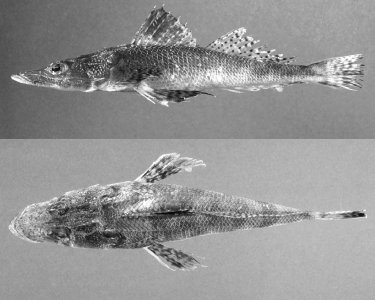
|
Relevant synonyms
Misidentification
Meristic formula
|
|
| photo : David Darom |
|
SHORT
DESCRIPTION
color :
back and flanks brown to beige with 4-6 dark bars. White belly. Small dark spots scattered on the fins.
size :
common 5-18 cm (max. 20 cm). |
DISTINGUISHING CHARACTERISTICS
BIOLOGY / ECOLOGY
habitat :
benthic, sandy bottom to depths of 20 m. |
|
1st
MEDITERRANEAN RECORD
|

|
|
DISTRIBUTION
|
ESTABLISHMENT SUCCESS
speculated reasons for success :
|
|
|
MODE OF
INTRODUCTION |
IMPORTANCE TO
HUMANS |
|
KEY
REFERENCES
|
 Platycephalus sp.
Platycephalus sp.